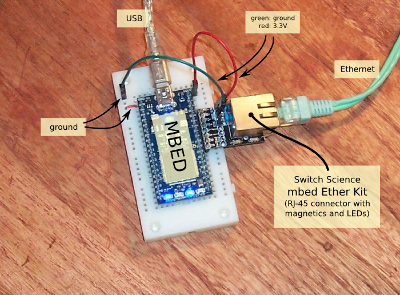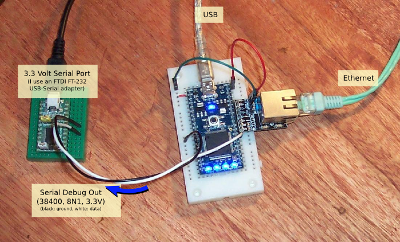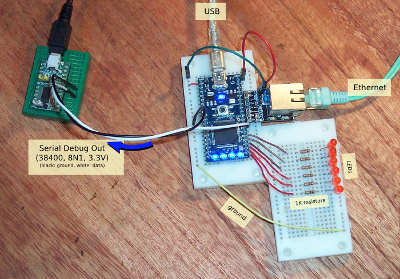Compatable Hardware
mbed
Maybe the easiest way to get started is with the mbed:
Same pic, but with notes:
(You'll have to solder the mbed-ether-kit yourself.)
(I think that the power and ground connection from the ethernet to the mbed serve as biasing for the magnetics, I'm not sure... The system will still work without these wires, but auto-negotiation with the ethernet switch will oftentimes take longer.)
Serial Debug
I'm the kind of programmer that does debugging with printf statements, so I use a serial port. Debug-out is on UART#2, pin #28:
Note: A "proper" PC serial port operates at 12 volts. The mbed operates at 3.3 volts. The serial adapters that are commonly used in the Arduino world (such as this one) should work just fine.
PWM - a simple app
The mbed has 6 PWM outputs. We can use those outputs as light dimmers. It's easy to connect these outputs to LEDs:




